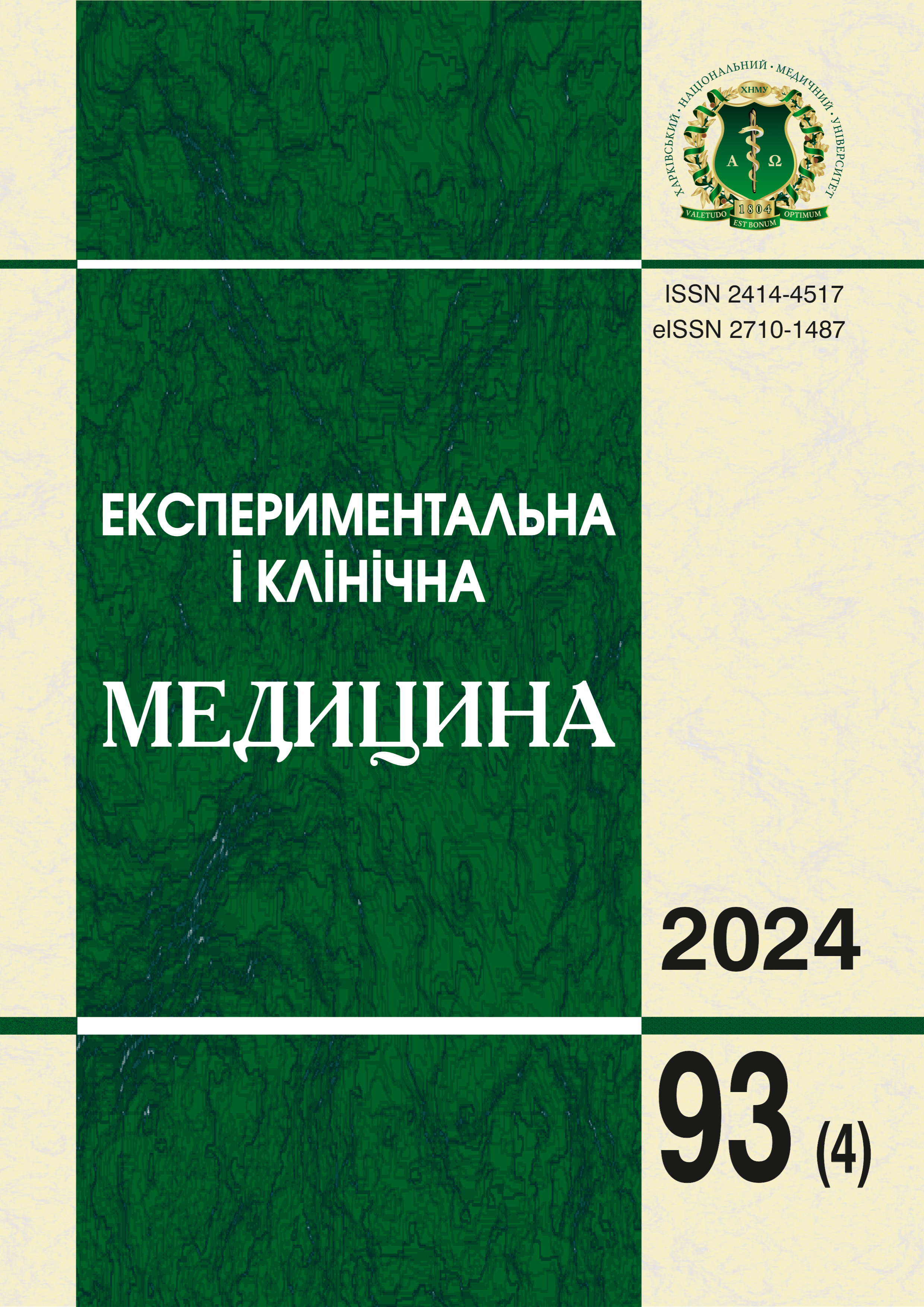Abstract
The issue of studying sexual dimorphism of skull structures depending on the craniotype remains relevant. The purpose was to study the morphometric parameters of the human orbit depending on the craniotype and gender. The study was conducted on 125 computed tomography scans of people's heads aged 25 to 85 years, performed using a computer tomography Neusoft, NeuViz 16 Essence 16-Slice CT Scanner System (Neusoft Medical Sytems Co, USA). Craniometric measurements were performed using programs Horos, ver. 4.0.1 (Neusoft Medical Sytems Co, USA) and RadiAnt Dicom Viewer, ver. 2024.1 (Medixant, Poland). The study was conducted with a slice thickness of 1.5 mm, followed by reconstruction in three planes. The basic facial index was calculated using the Garson-Kolman formula. It has been established that the height, width, perimeter, area, and conditional radius of the orbital opening of male euriprosopes are significantly different from similar indicators of females. In mesoprosopes, only the height of the orbital opening of men and women has a reliably significant difference. No statistically significant difference in the above indicators between representatives of different sexes was found in leptoprosops. No statistically significant differences in arithmetic mean values of the investigated indicators of the right and left eye sockets, as well as persons of different age groups, were found. According to the orbital index, all research objects were divided into 3 groups: khameconchs, mesoconchs, hypsiconchs. It has been established that the majority of both males and females belong to hypsiconchs, mesoconchs occupy an intermediate position, and the smallest group is khameconchs. The most widespread groups are hypsiconchs with euryprosopic facial skull shape and hypsiconchs with mesoprosopic shape.
Keywords: skull, morphometry, orbital index, orbital opening.
References
Weiss R 2nd, Read-Fuller A. Cone Beam Computed Tomography in Oral and Maxillofacial Surgery: An Evidence-Based Review. Dent J (Basel). 2019;7(2):52. DOI: 10.3390/dj7020052. PMID: 31052495.
Wilke F, Matthews H, Herrick N, Dopkins N, Claes P, Walsh S. A novel approach to craniofacial analysis using automated 3D landmarking of the skull. Sci Rep. 2024;14(1):12381. DOI: 10.1038/s41598-024-63137-1. PMID: 38811771.
Del Bove A, Menendez L, Manzi G, Moggi-Cecchi J, Lorenzo C, Profico A. Mapping sexual dimorphism signal in the human cranium. Sci Rep. 2023;13(1):16847. DOI: 10.1038/s41598-023-43007-y. PMID: 37803023.
Perez PI, Hendershot K, Teixeira JC, Hohman MH, Adidharma L, Moody M, et al. Analysis of Cephalometric Points in Male and Female Mandibles: An Application to Gender-Affirming Facial Surgery. J Craniofac Surg. 2023;34(4):1278-82. DOI: 10.1097/SCS.0000000000009189. PMID: 36727677.
Bishara SE, Treder JE, Jakobsen JR. Facial and dental changes in adulthood. m J Orthod Dentofacial Orthop. 1994;106(2):175-86. DOI: 10.1016/S0889-5406(94)70036-2. PMID: 8059754.
Nur Kuzan B, Yusuf Kuzan T. Evaluation of Facial Aging in Different Age and Gender Groups With Computed Tomography-Based Calvarium and Face Measurements. Dermatol Surg. 2024;50(7):636-642. DOI: 10.1097/DSS.0000000000004179. PMID: 38712856.
Shaw RB Jr, Katzel EB, Koltz PF, Kahn DM, Puzas EJ, Langstein HN. Facial bone density: effects of aging and impact on facial rejuvenation. Aesthet Surg J. 2012;32(8):937-42. DOI: 10.1177/1090820X12462865. PMID: 23012659.
Frank K, Gotkin RH, Pavicic T, Morozov SP, Gombolevskiy VA, Petraikin AV, et al. Age and Gender Differences of the Frontal Bone: A Computed Tomographic (CT)-Based Study. Aesthet Surg J. 2019;39(7):699-710. DOI: 10.1093/asj/sjy270. PMID: 30325412.
Skomina Z, Kocevar D, Verdenik M, Hren NI. Older adults' facial characteristics compared to young adults' in correlation with edentulism: a cross sectional study. BMC Geriatr. 2022;22(1):503. DOI: 10.1186/s12877-022-03190-5. PMID: 35701747.
Walczak A, Krenz-Niedbala M, Lukasik S. Insight into age-related changes of the human facial skeleton based on medieval European osteological collection. Sci Rep. 2023;13(1):20564. DOI: 10.1038/s41598-023-47776-4. PMID: 37996537.
Angelopoulos C. Anatomy of the maxillofacial region in the three planes of section. Dent Clin North Am. 2014;58(3):497-521. DOI: 10.1016/j.cden.2014.03.001. PMID: 24993921.
Angelopoulos C. Cone beam tomographic imaging anatomy of the maxillofacial region. Dent Clin North Am. 2008;52(4):731-52. DOI: 10.1016/j.cden.2008.07.002. PMID: 18805226.

This work is licensed under a Creative Commons Attribution-NonCommercial-ShareAlike 4.0 International License.

